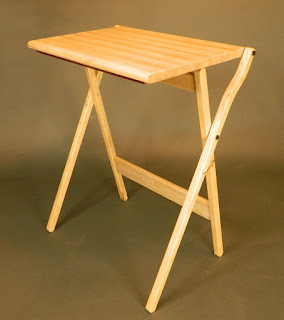Before digital photos arrived, film was used to capture images. There were two basic options for the type of film used including negatives for producing printed photos, and positives for mounting in a frame and projecting with a slide projector. For preparing a slide show to present to a class or audience reviewing the slides it took some creativity. To quickly view and choose the slides you wanted to use, a backlit light table was one option. They weren't portable or that common. Handheld gadgets you could place a slide on/in to backlight the slide and sometime magnify the captured image to view were also an option.
When I was in college I kept my slides in plastic notebook sheets designed for that purpose. To quickly view a page at a time I made this light wedge. Wedged so it could slip between sheets while still in the notebook. A single incandescent light tube provided the backlight.
 |
| Slid Open |
I still have a couple notebooks full of slides I took. Somewhere. They include some black and white photo negatives I mounted in slide frames. I used negatives to project onto 50% gray poster board to then sketch over to make pseudo-realistic posters. I'd color over the dark areas with a white pencil, and color over the light areas with a black pencil. That was my secret for the posters I would submit with my furniture designs when sent to competitions. I would make an updated version of this light wedge using cooler LED strips, but there are thin LED light panels already available that could be used. This wedge light is destined for a yard sale.
 |
| Switch and Handle |














